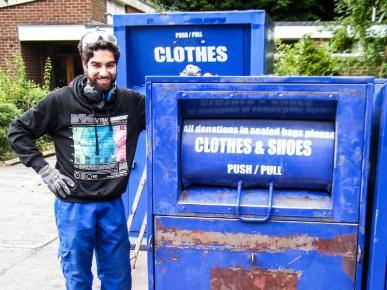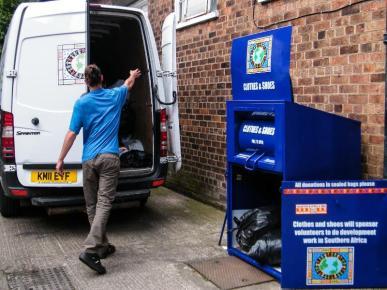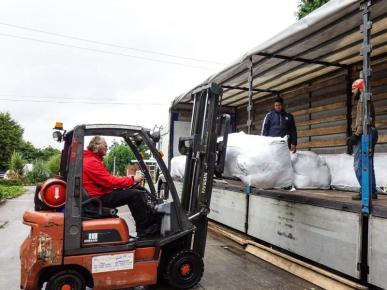Financing the programmes at CICD is a bit of a puzzle. Students have to pay to participate in our courses, but the fees are far from covering the expenses of running CICD. As a private college we don’t get state support.
We have decided to keep the course fees low and find other ways of sponsoring the Development Instructors.
For the last many years we have been running a collection of second hand clothes in clothing banks placed mostly on private sites in the north of England. We agree with a shop owner or pub landlord to put a clothing bank on their land for people to put their unwanted clothes and shoes in. We then drive around and empty them once a week or once a fortnight. We sell the clothes to wholesalers in Eastern Europe, and the income directly sponsors the training of the Development Instructors.
This is a very good production for a number of reasons.
First of all, of course, it means that we can keep the course fees low, because we have this extra source of income.
Secondly, we collect things that still have a value and would otherwise simply be thrown out as waste. In this way it can come to use, and recycling clothes saves a lot of resources. It has been calculated that for every lb. of clothes that is reused we save 6,000 lb. of water, 0.3 lb. of fertiliser and 0.2 oz of pesticides. Besides 3.6 lb. less green house gas is sent out into the atmosphere.
Thirdly this collection also enables some students to raise a scholarship before starting one of the Development Instructor courses. The collection is run by staff and students at CICD, and the money that would be paid out in salaries if this was run as a purely commercial business is instead placed in a scholarship fund. This fund helps students who cannot pay the course fees for one of the programmes.
There are also the benefits of how the recycling of clothes and shoes are good for the environment:
- We reduce the amount of resources, which are used to produce clothes, e.g. around 700 gallons of water is used to produce one T-shirt, plus the amount of energy used to make clothes is 10 times that to make steel and glass.
- We also reduce fertiliser, pesticides and greenhouse gases
- Around 1.1 million tonnes of clothes are bought in the UK; £44 billion is spent (around £1,700 for every household) and over 30% of second hand clothes go to waste – all on an annual basis
- Annually, 1.5-2 million tonnes of clothes are discarded, in which only 16% (300,000 tonnes) are reused and the rest end up in a landfill. CICD recycles around 600 tonnes a year (or 12 tonnes weekly)
- 1 bag of clothes is equivalent to 20kg of CO2 ; 1 container of clothes saves the same amount of CO2 as 150 trees
- If each piece of clothing was used for an extra 3 months, carbon emissions would be reduced by 5-10% and if every tonne was reused, CO2 emissions would be reduced by 7 tonnes







